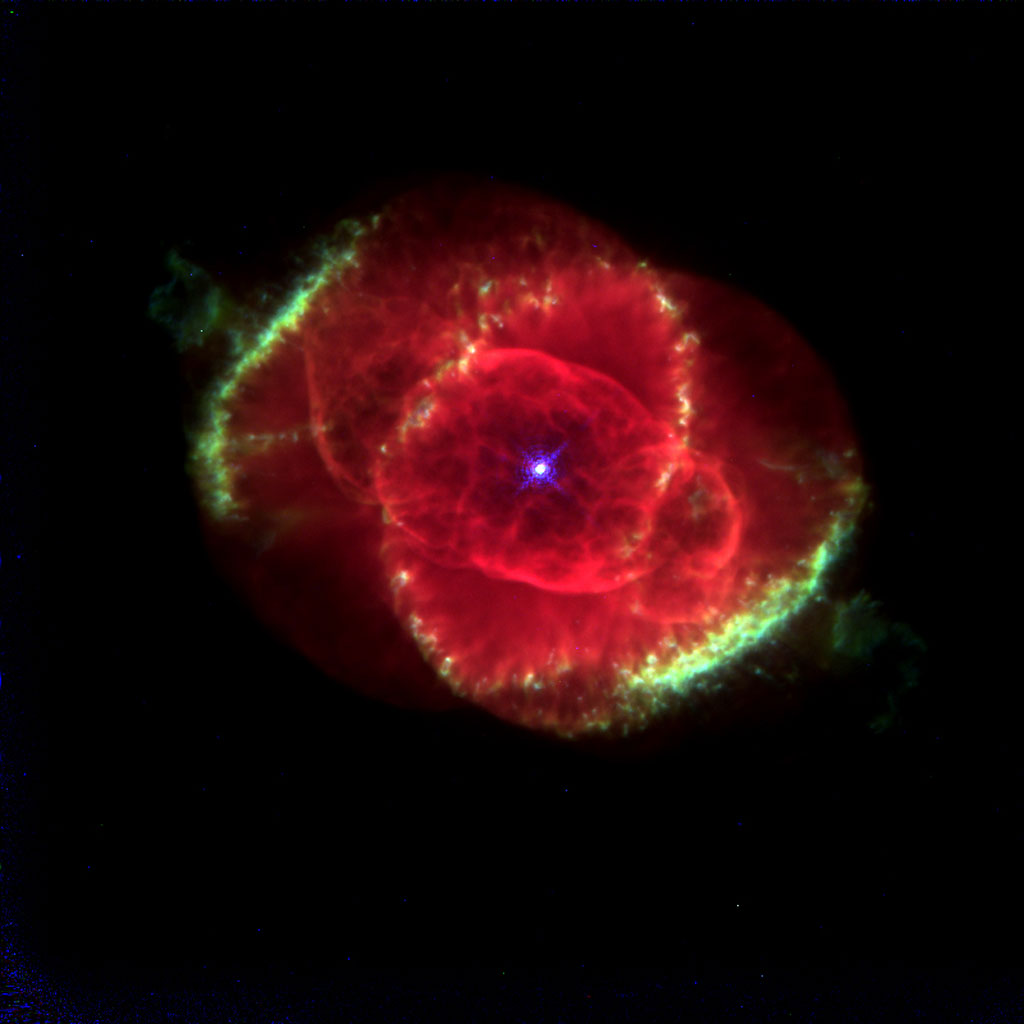Planetary nebulae mark the ends of Sun-like stars’ lives. After a star has exhausted the fuel within its core, it casts off about half of the leftover material — plenty to create future generations of celestial bodies. This image of the Cat’s Eye Nebula (NGC 6543) shows a lot of hydrogen (red), nitrogen (green), and oxygen (blue). // J. P. Harrington and K. J. Borkowski (University of Maryland)/NASA
That’s a great observation. Hydrogen is the main source of fuel for stars like the Sun. However, the atoms near the center of a star are the only ones that participate in the fusion reactions that power it. These atoms make up only a small fraction of all those in a star. In fact, more than 90 percent of the atoms in a star like the Sun are hydrogen, and less than 10 percent of the hydrogen atoms in a star when it was born fuse into heavier elements during its 10-billion-year lifetime. When the fusion reactions that power the Sun cease, our star will cast off about half of its material and its core will evolve into a tiny, hot white dwarf star.
There’s more to the story, too. The Milky Way is slowly growing larger as clouds of hydrogen gas steadily rain down on its disk. This material mixes with the atoms recycled from earlier generations of stars, and this combination then forms into new stars and planets, continuing the cosmic circle of life.
Ian Roederer
The Carnegie Observatories,
Pasadena, California
The Carnegie Observatories,
Pasadena, California










